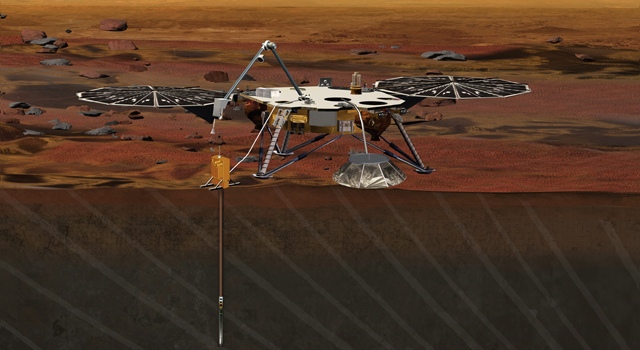
NASA has given the go-ahead to begin construction of InSight, the agency’s next Mars lander, now slated for launch in 2016 on an unprecedented mission to investigate the Red Planets deep interior, elucidating the nature of the Martian core, measuring heat flow, and sensing for “Marsquakes.”
InSight, which stands for Interior Exploration Using Seismic Investigations, Geodesy and Heat Transport, is a stationary lander—in contrast to NASA’s ongoing Curiosity and Opportunity mobile rovers. It will touch down near the Martian equator in late 2016.
InSight is an international science mission and a near duplicate of the Phoenix spacecraft, Bruce Banerdt, InSight Principal Investigator of NASA’s Jet Propulsion Laboratory (JPL), Pasadena, Calif., told me.
Liftoff of InSight on an Atlas V is scheduled for March 2016 from Vandenberg Air Force Base, Calif. This marks NASA’s first-ever interplanetary mission to launch from California.
The spacecraft design is based on the proven platform of NASA’s three-legged Phoenix Mars probe, which successfully landed on the frigid northern polar regions in 2008 in search of potential habitats for life.
Phoenix quickly discovered water ice and salty soils that could be favorable for the genesis and support of microbial extraterrestrial life when it dug some 7 inches below the surface and analyzed water ice and soil samples within reach of its robotic arm.
See our unique Phoenix 3 footpad mosaic below, created by the image processing team of Ken Kremer and Marco Di Lorenzo.
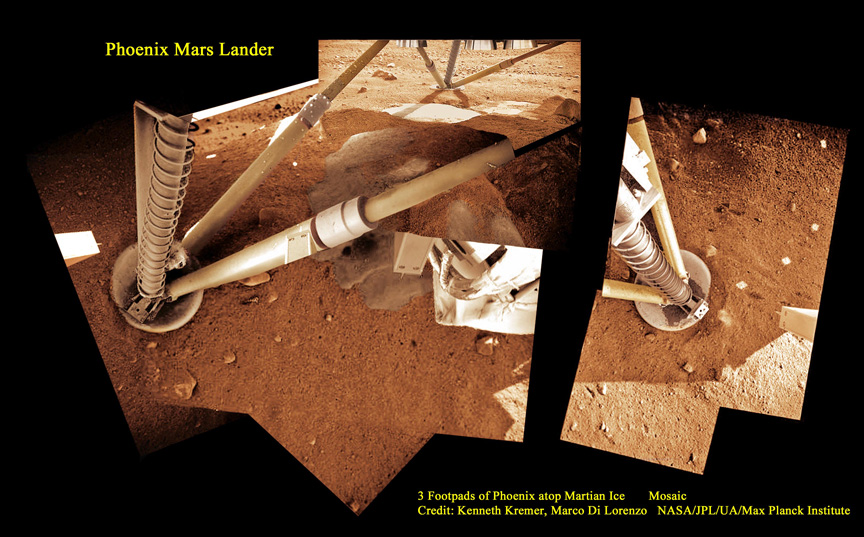
InSight’s purpose is to answer one of science’s most fundamental questions: How were the planets created?
InSight will mine the deepest hole yet into Mars with a self hammering “mole”—to a depth of 3 to 5 meters—and unveil the nature of the mysterious deep interior and central core of the Red Planet.
Therefore, InSight will penetrate far deeper than Phoenix in order to investigate how Earth-like planets formed and developed their layered inner structure of core, mantle, and crust by deploying never-before-used instruments onto the Martian surface to collect information about those interior zones.
These include a seismometer to measure waves from the interior, including “Marsquakes,” and a burrowing tool that will pierce 3 to 5 meters beneath the surface and measure heat emanating from the interior. A radio science experiment seeks to determine if Mars has a molten or solid core.
“InSight is essentially built from scratch, but nearly build-to-print from the Phoenix design,” Banerdt said. The team can keep costs down by re-using the blueprints pioneered by Phoenix instead of creating an entirely new spacecraft.
“The robotic arm is similar (but not identical) to the Phoenix arm,” Banerdt explained.
However, there will be some significant modifications to the design of the $425 million solar powered probe, being assembled by prime contractor Lockheed Martin.
For example, the planned mission duration is 720 days—about two years at the sunny equator versus 90 days for Phoenix in the utterly cold Martian arctic region. Furthermore, the science goals and instrument suite are also completely different.
“We will incorporate many features from our Phoenix spacecraft into InSight, but the differences between the missions require some differences in the InSight spacecraft,” said InSight Program Manager Stu Spath of Lockheed Martin Space Systems Company, Denver, Colo., in a statement.
“For example, the InSight mission duration is 630 days longer than Phoenix, which means the lander will have to endure a wider range of environmental conditions on the surface.”
The “GO” to start the hardware construction phase was given this past week following the successful completion of the Mission Critical Design Review (CDR).
“Our partners across the globe have made significant progress in getting to this point and are fully prepared to deliver their hardware to system integration starting this November, which is the next major milestone for the project,” said Tom Hoffman, InSight Project Manager at NASA JPL.
“We now move from doing the design and analysis to building and testing the hardware and software that will get us to Mars and collect the science that we need to achieve mission success.”
InSight is an international science mission, Banerdt said. It is funded by NASA’s Discovery Program as well as several European national space agency’s and countries. Germany and France are providing InSight’s two main science instruments: HP3 and SEIS through the Deutsches Zentrum für Luft- und Raumfahrt (DLR) and the Centre National d’Etudes Spatiales (CNES).
“The seismometer (SEIS, stands for Seismic Experiment for Interior Structure) is from France (built by CNES and IPGP) and the heat flow probe (HP3, stands for Heat flow and Physical Properties Probe) is from Germany (built by DLR),” Banerdt explained.
The purpose is to answer one of science’s most fundamental questions: How were the planets created?
InSight will accomplish much of its science investigations through these experiments sitting directly in contact with the Martian surface. The robotic arm will pluck two of the instruments from the lander deck and place them onto Mars.
“The arm will pick the SEIS seismometer and HP3 heat flow probe off the deck and place each on the ground next to the lander. The arm doesn’t have a drill, but the heat flow probe itself will burrow down as deep as 5 meters,” Banerdt explained.
SEIS will be built by CNES in partnership with DLR and the space agency’s of Switzerland and the United Kingdom. It will measure waves of ground motion carried through the interior of the planet, from “Marsquakes” and meteor impacts.
HP3, built by DLR, will measure heat coming toward the surface from the planet’s interior.
The third experiment, named RISE (Rotation and Interior Structure Experiment), is to be provided by JPL and will use the spacecraft communication system and a radio link to NASA’s Deep Space Network antennas on Earth to precisely measure a wobble in Mars’ planetary rotation that could reveal whether Mars has a molten or solid core, and elucidate clues to its interior structure and composition.
NASA’s Opportunity rover conducted a Doppler radio tracking experiment similar to what is planned for RISE, but InSight will have a big advantage, according to Banerdt.
“The RISE experiment will be very similar to what we previously did on Opportunity in 2012, but will be able to do much better,” Banerdt elaborated.
“The differences are that we will get more tracking every week (Opportunity was power-limited during the winter months [in 2012]; that’s why she was stationary!) and will make measurements for an entire Mars year – we only got a handful of months from Opportunity.”
Insight will also be equipped with a pair of cameras and make some weather measurements.
“We have a camera on the arm and one fixed to the lander, both primarily to support placing the instruments on the surface, although they will be able to scan the landscape around the spacecraft. Both are Black & White,” Banerdt told me.
The cameras will be similar to the navcams and hazcams on Opportunity, Spirit, and Curiosity.
The navcam will be mounted on the robotic arm and the hazcam will be fixed below the lander deck.
“We will measure pressure, temperature and wind, mostly to support noise analysis on the seismic data, but will also supply information on the weather.”
I asked Banerdt, “Where will InSight land?”
“Our planned landing site is in Elysium Planitia,” Banerdt told me. “It was chosen for optimizing engineering safety margins for landing and power.”
The more equatorial landing site affords far more sun for the life giving solar arrays to power the instruments and electronics for a planned duration of about two years, compared to the polar landing site for Phoenix which only provided enough power to operate for five months.
“We have global objectives and can do our science anywhere on the planet.”
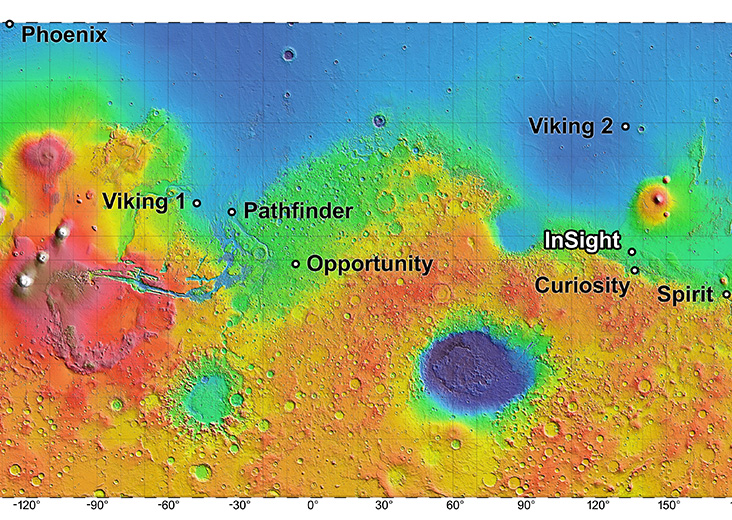
Elysium Planitia is not too far from the landing sites of the Spirit and Curiosity rovers. The Elysium Mons volcano is also in the general area.
But it’s still some time from precise site selection.
InSight is a geophysical lander targeted to delve deep beneath the surface into the Martian interior and to check its “vital signs,” like “pulse” though seismology, “temperature” through the heat flow probe, and “reflexes” through precision tracking.
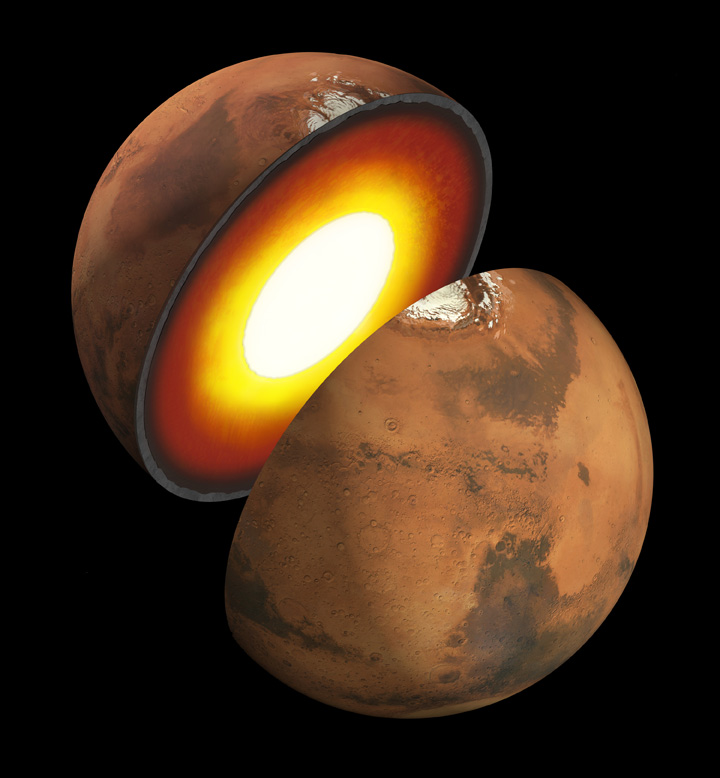
“Mars actually offers an advantage over Earth itself for understanding how habitable planetary surfaces can form,” said Banerdt in a NASA statement.
“Both planets underwent the same early processes. But Mars, being smaller, cooled faster and became less active while Earth kept churning. So Mars better preserves the evidence about the early stages of rocky planets’ development.”
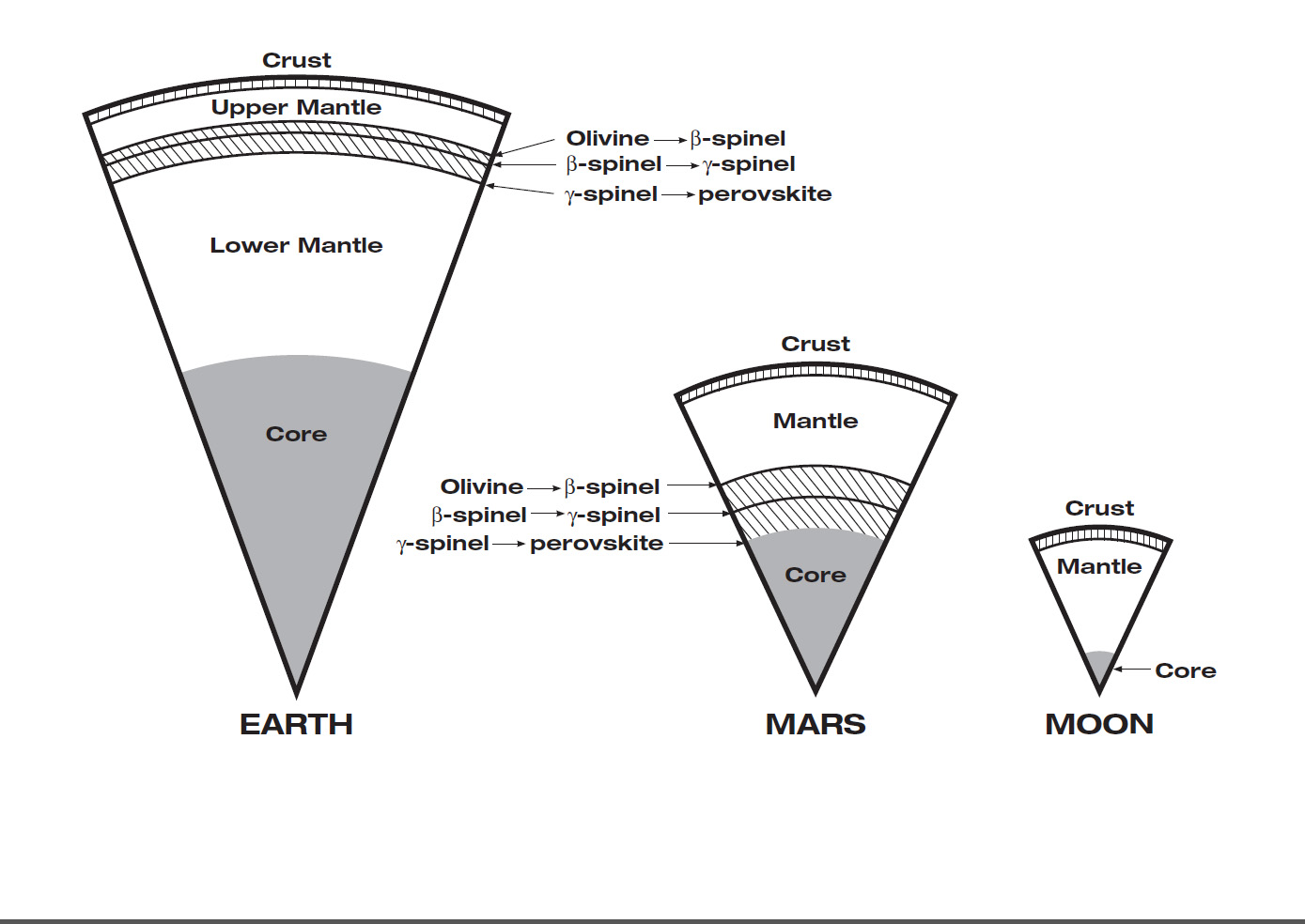
Want to keep up-to-date with all things space? Be sure to “Like” AmericaSpace on Facebook and follow us on Twitter: @AmericaSpace




Check the planet temperature with http://myearthishot.com
When it breaks the martian colonists might fix it to drill water wells.
Wonderful article, Ken. The maturity of planetary vehicles over the past 50 years almost gives one a sense of, “Yeah, we can do that….why not?” InSight is yet another important step in gaining a more complete understanding of the Red Planet. (Only wish it carried a color camera!)
A seismometer measures vibrations, so it’s basically a sort of a microphone. If any martian mole comes diggin’ around, InSight would hear it. How cool would that be?